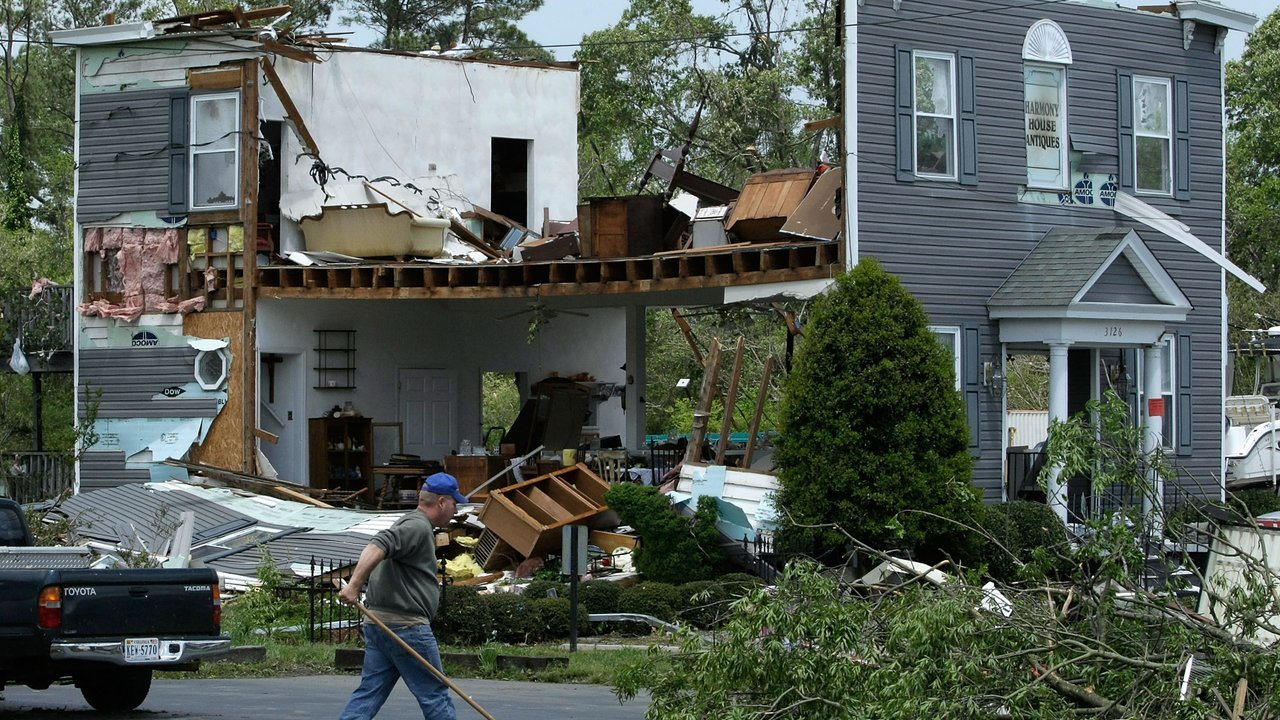
Amid the escalating impacts of severe convective storms (SCS), insurance carriers likely face mounting pressure to rethink how they underwrite, price, and manage risk in a new era of climate-driven volatility.
Even taking into account growing populations in urban areas and inflation, insured losses from SCS events are reportedly rising at an alarming rate. In 2024, tornadoes, hail, and wind events drove a staggering $56.4 billion in economic damages, according to Munich Reinsurance Company.
For Tehya Duckworth, SVP, property underwriting manager at Munich Re US, record-breaking losses in recent years should signal a need for proactivity among carriers.
“We’re seeing that when SCS events do occur, they tend to be more severe. So, it’s not purely a frequency issue, but a ‘frequency of severity’ phenomenon as well,” Duckworth said. “Given that extreme weather is here to stay, insurers need to proactively manage the impact on their book of business.”
What is driving losses from SCS?
A big contributor to SCS losses, according to Duckworth, is what’s known as the “bullseye effect.” This is generally understood to mean that as suburban sprawl expands, development is pushed into areas that were once open fields. As tornadoes and hailstorms sweep across broader footprints, more valuable property ends up directly in the path of destruction.
Beyond development patterns, there’s also a shift underway in the storms themselves. “Over the past couple of decades, meteorologists have noted an eastward shift in SCS activity.” Duckworth said, noting tornado activity once concentrated in places like Oklahoma and Kansas is now appearing more frequently in the Southeast, Midwest, and Mid-Atlantic.
The volatility in weather patterns is likely being influenced by climate change, including increasingly erratic jet streams. In the summer of 2023, for example, a persistent “Omega block” pattern over the United States triggered multiple SCS outbreaks in Texas in a single month. This alone helped make 2023 one of the worst SCS loss years on record, according to Duckworth.
While such extremes may not hit annually, the frequency of billion-dollar SCS loss events is increasing. In the face of this new normal, insurers must adapt across multiple fronts: underwriting, claims, pricing, accumulation management, and reinsurance.
Adapting across multiple disciplines
Underwriting
Claims
Pricing
Accumulation management
Reinsurance
Underwriting and claims strategies for managing SCS losses
Proactive underwriting begins with understanding the most vulnerable part of a property; the roof, for example. “We’ve seen that asphalt shingle roofs in particular break down a lot faster than advertised,” Duckworth said. “Older roofs experience more loss, which is where policy form language comes into play, especially settlement types.”
In response, some insurance companies have moved to actual cash value on older roofs, and some insurers include a depreciation schedule to make the adjustment transparent.
Capturing and utilizing better data is another critical lever. Many insurers are collecting property data through inspections and third-party valuations; however, they fail to store and use it effectively.
Duckworth said organizations such as the Insurance Institute for Business and Home Safety (IBHS) are looking at those factors to assess vulnerability.
“Capturing that information and getting it into your systems means it could be used for pricing or underwriting down the line,” she said. “Getting the right value upfront, and ensuring it adjusts properly over time, is critical since property insurance is based on that value.”
Percentage-based deductibles, once mostly used in hurricane-prone regions, are becoming more common in storm-heavy inland states. As home values rise, the deductible naturally does too, maintaining policyholder skin in the game and aligning interests with insurers and reinsurers alike.
Finally, inspection practices are rebounding after a period of decline due to cost-cutting. Duckworth emphasized the benefit of renewal and post-loss inspections, not just initial ones, to track changes or additions made by policyholders or verify repair quality.
In claims management, the loss of experienced adjusters through retirement is a looming issue. Duckworth stressed the importance of training, especially as many adjusters retire and new ones come in. “Ensuring the adjusters know how to apply policy language appropriately helps safeguard that companies pay what is owed,” she said.
When it comes to pricing, data once again plays a pivotal role. Models, while helpful, have their limits, especially around SCS, and companies relying on models alone may find themselves exposed.
“Many companies discount model outputs based on internal practices, but the reality is that models have been underestimating SCS losses,” Duckworth said. “That could be due to how they handle event severity versus frequency. Additionally, many models need to be recalibrated to take these factors into consideration.”
Accumulation management remains one of the toughest challenges. Often insurers don’t grasp how widespread and repeated these storm losses can be, Duckworth noted.
“Severe convective storms require more nuanced aggregation management than, say, a single hurricane,” she explained. “If you’re writing across the Midwest, Southeast, and Plains, you want to not only avoid too much exposure in a single city, but also in cities that are too close together.”
Some keys to long-term success with SCS risk
Reinsurance can buffer volatility, but it cannot fix poor fundamentals, especially for large single-event cases, like the 2020 Midwest derecho, where millions across the Midwest were affected by wide-scale utility disruptions, property damage, and severe damage to crops. “Reinsurance is not a substitute for sound pricing,” Duckworth advised.
Policyholder education is critical to long-term mitigation. Many insurers have broad agency networks they can leverage to educate policyholders, not just about risk prevention and maintenance, but about their real exposure.
There’s also a broader challenge: building for resilience. Long-term success with SCS risks includes mitigation through improved building codes in storm-prone areas. “Organizations like the Institute for Business and Home Safety (IBHS), through their IBHS Fortified program, are focused on protecting property. These programs aim to keep homes and communities intact after disaster strikes,” Duckworth said.

In fact, FEMA estimated that for every dollar that is spent on mitigation, you save six dollars on losses downstream, especially when you consider the indirect costs of displacement and disruption.
This article was produced by Insurance Business America in collaboration with Munich Re Specialty.
*Munich Reinsurance America, Inc. (Munich Re US)
Learn more about Munich Re US’ reinsurance solutions
Contact us

This may interest you
Related solutions
Newsletter
properties.trackTitle
properties.trackSubtitle



